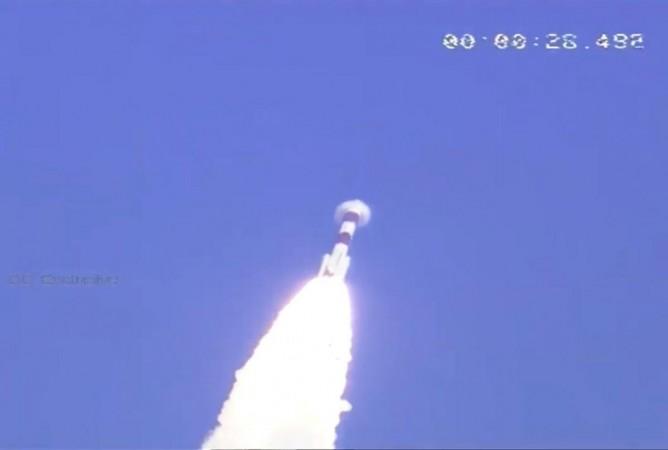South Korea's next-generation midsized observation satellite successfully entered its target orbit and made its first contact with a base station on Monday, the science ministry said, marking the country's latest step to boost its space industry.
The 540-kilogram satellite made contact with the Svalbard Satellite Station in Norway around 100 minutes after its launch on Russia's Soyuz-2.1a rocket from the Baikonur Cosmodrome in Kazakhstan at around 11.07 a.m. (local time), according to the Ministry of Science and ICT, Yonhap news agency reported.

Researchers at the Korea Aerospace Research Institute (KARI) confirmed that the satellite's system was operational and that it reached its initial target orbit of between 484 kilometres and 508 kilometres above Earth, the ministry said.
The observation satellite was originally scheduled to take off last Saturday, but an error in the Russian rocket's electrical ground support equipment pushed back the launch to Monday.
Equipped with an imaging sensor system developed by South Korean researchers, the satellite will conduct a four-year observation mission 497.8 kilometres above the Earth's surface. It is scheduled to provide precise observation videos of the Earth starting in October after a six-month trial run.
South Korean space program
The launch comes after years of investment in the space industry by the relative latecomer to the global space development race. South Korea has spent a total of 158 billion won ($139 million) on the satellite project since 2015.
The science ministry said most of the core components of the satellite's optical payload were developed by South Korean research institutes and companies, including defence IT firm Hanwha Systems Co.
The country is also planning to launch its first locally developed rocket Nuri with a mock payload in October, for which the country has earmarked nearly 2 trillion won since 2010.
Spy satellites over North
In July 2020, Seoul said that it would begin work on launching its own military surveillance satellites to monitor North Korea, after talks with the United States to revise their so-called missile guidelines, first signed in 1979.
Kim Hyun-jong, a senior national security aide to President Moon Jae-in, had said in a news briefing after the talks that the easing of the missile guidelines had been part of it to help cover the cost of keeping 28,500 American troops in the South.
Under the revised guidelines, US had removed the limit on how powerful solid-fuel rockets South Korea can build to launch space vehicles. South Korea said it plans to deploy five military reconnaissance satellites by 2023 at a cost of $1 billion.
(With additional inputs from the Desk)














